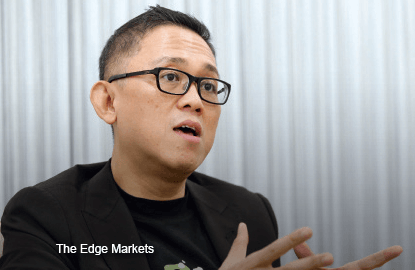
![Puan: We want to be the first digital mobile operator [in Malaysia] and will provide more services. <strong><em>Photo by Mohd Izwan Mohd Nazam</em></strong> Puan-Chan-Cheong_73_1074_theedgemarkets](http://edgemarkets.s3-ap-southeast-1.amazonaws.com/pictures/Puan-Chan-Cheong_73_1074_theedgemarkets.png) LOSS-MAKING Packet One Networks (M) Sdn Bhd (P1) is generally perceived to be a burden to Telekom Malaysia Bhd (TM) as the former is still burning cash fast in building new infrastructure and it will not stop anytime soon.
LOSS-MAKING Packet One Networks (M) Sdn Bhd (P1) is generally perceived to be a burden to Telekom Malaysia Bhd (TM) as the former is still burning cash fast in building new infrastructure and it will not stop anytime soon.
But P1 CEO Puan Chan Cheong, better known as C C Puan, who brought TM on board, does not agree. He claims that P1 would have been profitable if not for the heavy capital expenditure.
“We can easily be profitable anytime we want to. All we have to do is stop investing for future growth, but that is not our objective,” he tells The Edge.
At the earnings before interest and tax (Ebit) level, P1 saw its losses widened to RM49.6 million in the first quarter ended March 31, 2015 (1QFY2015), from RM40.2 million in the previous quarter. Revenue, however, grew 63% to RM69.3 million.
TM bought into P1 last September. The fourth quarter ended Dec 31, 2014, was the maiden quarter of consolidation for TM. P1 contributed a total Ebit loss of RM89.8 million to TM’s balance sheet in the last two financial quarters — some quarters, especially those sceptical about the acquisition, find this disturbing.
The WiMAX operator’s financials for FY2014 are not available to the investing public. In FY2013, despite generating Ebitda of more than RM40 million on the back of RM300 million in revenue, P1 still reported a net loss of more than RM100 million, mainly due to depreciation of assets and amortisation costs.
While it remains to be seen how much longer it will take for P1 to turn around, Puan says the company is targeting to launch 4G LTE services this year.
TM’s initial investment was RM350 million for a 57% stake in P1 and RM210 million for Green Packet Bhd’s newly issued medium-term notes (MTN), which may be exchanged for Green Packet’s stake in P1 later.
Out of RM210 million MTN, TM has invested close to RM120 million to date. The remaining RM90 million is expected to be invested this year.
The acquisition was completed last September. At present, TM controls 55.3% of P1; Green Packet, 31.1%; and South Korean-based SK Telecom Co Ltd (SKT), 13.6%.
Puan opines that it is too early for anyone to draw a conclusion about P1’s contribution to TM.
“Nine months is too short for any integration of telecommunications companies. A lot of work has been done since the acquisition, and we have been keeping quiet for some time now, as opposed to media and analyst briefing sessions we used to hold every quarter. But just in case you’re wondering, we are still in the market,” says Puan, who is also the founder of Green Packet.
He adds that although P1 is part of TM, it still retains its own culture, which is very much different from its major shareholder’s.
He also says P1 plans to roll out LTE networks and services by upgrading its WiMAX networks.
Knowing that similar cellular services are already available in the market, Puan is quick to add that P1 does not intend to position itself with the big boys — Maxis, DiGi and Celcom.
“Our intention is not to become the fourth or fifth mobile operator. We want to be the first digital mobile operator [in Malaysia] and will provide more services,” he says.
P1 is currently reviewing its brand name, as it has been too closely associated with WiMAX and fixed wireless broadband, but Puan declined to reveal more details.
TM has a large customer base of 2.3 million, something that P1 could leverage to gain market share. At present, P1 has about 500,000 subscribers.
In the past six years, P1 had invested RM1.3 billion to expand its 4G WiMAX services to cover 60% of the population. P1 was the leading broadband service provider (from 2008 to 2010) before TM rolled out its high-speed broadband (HSBB) services — UniFi.
Meanwhile, P1’s rivals have upgraded to more advanced technologies, hence, P1 has to incur heavy capital expenditure to convert to 4G LTE from WiMAX.
Now that P1 has TM behind it, will the good times return soon? No one could rule out the possibility, but some quarters may say it will take a long while, considering the hefty infrastructure investment.
This article first appeared in The Edge Malaysia Weekly, on July 6 - 12, 2015.
Save by subscribing to us for your print and/or digital copy.
P/S: The Edge is also available on Apple's AppStore and Androids' Google Play.